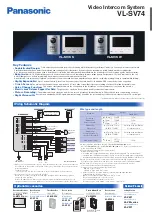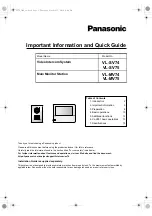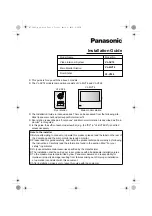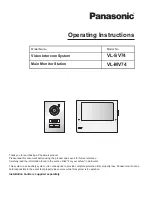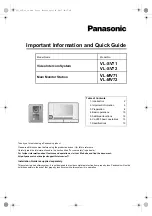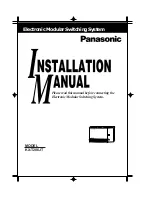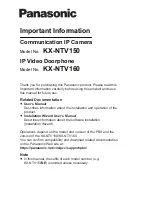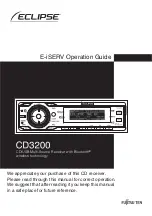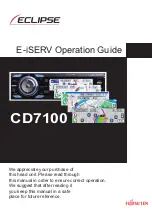
ITA
UK
23
La
rappresenta la
potenza termica dissipabile dal diffusore o dai singoli
altoparlanti nel caso di utilizzo in BI-AMP.
Viene misurata secondo lo standard AES che prevede un
test di 2 ore con segnale “pink noise”, fattore di cresta 2.
La potenza viene determinata dalla tensione RMS al
quadrato divisa per l’impedenza minima del diffusore o del
singolo altoparlante.
La
è la potenza
che il diffusore può sopportare per un brevissimo intervallo di
tempo. Corrisponde a quattro volte la potenza AES e viene
calcolata in base alla massima tensione di picco che
l’amplificatore consigliato può fornire al diffusore.
Le capacità in termine di SPL nei transistori del segnale
musicale sono effettivamente corrispondenti a tale valore;
quindi il dato di SPL max. fornito nella tabella delle specifiche
tecniche viene calcolato in base a tale valore di potenza.
La potenza dell’
non
viene misurata, ma è pari al doppio della potenza AES e tiene
conto delle capacità dinamiche degli altoparlanti di
sopportare picchi di potenza per brevi istanti di tempo.
Il valore fornito corrisponde alla potenza RMS che
l’amplificatore deve avere per fornire il segnale di test ( pink
noise con fattore di cresta 2) usato per misurare la potenza
AES.
Un amplificatore con tale potenza, se usato con segnali
musicali con fattore di cresta maggiore o uguale a 6dB,
permette di ottenere il massimo delle prestazioni del
diffusore, erogando una potenza di lungo periodo non
superiore a quella AES del diffusore.
Se, viceversa, si usano segnali musicali molto compressi o il
volume viene alzato fino al punto da spingere fortemente in
clipping l’amplificatore, allora la potenza effettiva di lungo
periodo erogata tende a raggiungere o addirittura superare
quella RMS dell’amplificatore, danneggiando in modo
irreparabile gli altoparlanti.
POTENZA DI LUNGO TERMINE AES
POTENZA DI BREVE TERMINE IEC 268-5
AMPLIFICATORE CONSIGLIATO
ATTENZIONE: il dato di potenza che effettivamente
corrisponde alle capacità termiche del diffusore di dissipare
potenza elettrica per lungo periodo è quella AES. Tutti gli altri
dati si riferiscono a “capacità transitorie” del diffusore di
accettare potenze correlate con la natura del segnale audio.
Con questo tipo di segnale è consigliabile usare un
amplificatore con potenza RMS pari alla potenza AES del
diffusore, facendo comunque attenzione a non fornire un
segnale di ampiezza tale da portare troppo spesso in clipping
l’amplificatore.
CARATTERISTICHE TECNICHE
TECHNICAL SPECIFICATIONS
AES LONG TERM APPLICABLE POWER
IEC268-5 SHORT TERM APPLICABLE POWER
THE RECOMMENDED AMPLIFIER
denotes the
thermal power that can be dissipated by the loudspeaker or
by the individual drivers when operated in BI-AMP mode.
This value is measured in accordance with the AES standard,
which involves a 2 hour test with pink noise signal, crest
factor of 2. Power is determined by the square of the RMS
voltage divided by the minimum impedance of the
loudspeaker or the individual driver.
corresponds to the power that the loudspeaker can withstand
for a very short time interval. This value corresponds to 4
times the AES power value and it is calculated on the basis of
the maximum peak voltage that the recommended amplifier
can supply to the loudspeaker. Capacities in terms of SPL in
transient components of music signals, effectively
correspond to the short term applicable power value;
therefore, the max. SPL value specified in the technical
specifications table is calculated on the basis of this power
value
Although the power of
is
not measured, it is equivalent to double the AES power value
and it takes account of the dynamic capacities of the
speakers to withstand short duration power peaks. The value
supplied corresponds to the RMS power required of the
amplifier in order to supply the test signal (pink noise with
crest factor 2) utilised to measure AES power.
An amplifier of this power, if used with music signals with
crest factor greater than or equal to 6dB, makes it possible to
get the best performance out of the speaker, delivering a long
term power output that is no higher than the AES power of the
loudspeaker.
On the contrary, when using highly compressed music
signals or if the amplifier volume is increased to the point of
intensive clipping, then the effective long term power tends to
reach or even exceed the RMS output of the amplifier,
resulting in irreversible damage to the speakers.
WARNING: the power value that effectively corresponds to
the thermal capacity of the loudspeaker to dissipate electrical
energy over the long term is represented by the AES value.
All other values refer to the "transient capacity" of the
loudspeaker to accept power inputs, correlated with the
nature of the audio signal.
With signals of this type it is always advisable to use an
amplifier whose RMS output is identical to the speaker AES
power, while taking care to ensure that the signal supplied is
such that the amplifier is not caused to function in clipping
mode too frequently.
Summary of Contents for PRO MAX 10
Page 28: ......
Page 29: ......
Page 30: ......
Page 31: ......
Page 32: ......
Page 33: ......
Page 34: ......
Page 35: ......
Page 36: ......
Page 37: ......
Page 38: ......
Page 39: ......
Page 40: ......
Page 41: ......
Page 42: ......
Page 43: ......
Page 44: ......
Page 45: ......
Page 46: ......
Page 47: ......
Page 48: ......
Page 49: ......
Page 50: ......
Page 51: ......































